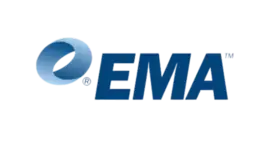In this episode, hosts Dan Twing and Tom O'Rourke explore the challenges of migrating automation software. They discuss the business and technical drivers for switching to a different automation tool, what makes these projects difficult, and why migration is occurring more frequently. Key Points
Migration frequency is increasing: Average time on workload automation tools has dropped from 12-15 years to just 4-5 years, reflecting market changes and rapid technology evolution
Multiple drivers force migration decisions: Key catalysts include cloud capabilities, pricing changes, product limitations, integration gaps, vendor roadmap misalignment, and operational consolidation needs
Integration complexity and heavy API use creates "stickiness": Enterprise software becomes difficult to replace due to extensive connections to other systems and staff training investments
Vendor consolidation creates imposed migrations: Acquisitions and end-of-life announcements force unwanted migration decisions, though large customers can sometimes negotiate timeline extensions
Five Learnings
Production continuity is paramount: Business operations must continue during migration, requiring careful staging and sequencing of which systems to migrate first
Conversion tools have limitations: Automated migration tools typically handle only basic configurations, while integrations, complex scripting and custom workflows require manual recreation
Scope decisions are critical: Organizations must decide whether to migrate everything at once, implement in phases, or leave some legacy systems in place permanently
Cultural resistance must be addressed: Staff resistance to change represents a significant challenge that requires dedicated change management attention
Professional expertise is essential: Successful migrations typically require either internal team augmentation or external professional services from vendors or specialized partners
Takeaways for Automation Leaders Considering Migration
Assess the current automation environment, inventorying workflows and integrations, analyzing the quality of schedule and configuration data, and understanding what knowledge gaps exist in the automation staff and users.
Establish migration scope and strategy, considering whether the conversion should include redesign of business and operational workflows, whether all applications should be migrated, and how to maintain production SLAs while building and deploying a new automation system.
Evaluate the business continuity, technical, resource and operational risks, creating risk mitigation strategies in advance for scenarios that have a significant likelihood of occurring and which would have a substantial impact on the business or the project.
Develop an implementation plan, defining the project timeline, resources and costs, testing and rollback procedures, progress metrics, and how stakeholders and users will be engaged through the project.









Comments ( 0 )